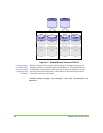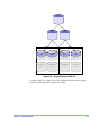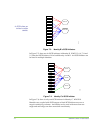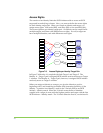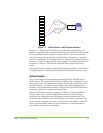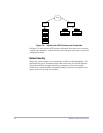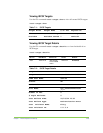
7-6 SANRAD V-Switch CLI User Manual
Access Rights
The creation of an identity limits the iSCSI initiators able to access an iSCSI
target and its underlying volumes. Now, you want to define the access rights
for each identity-target pair. When you couple an identity and target, you
assign access rights: read-write (RW), read-only (RO) or not accessible (NA).
The access rights are per identity-target pair. An identity can be coupled with
multiple targets, each time with different access rights. As well, a target can
have multiple identities, each with different access rights.
10152
wwui2
wwui1
wwui10
wwui9
wwui8
wwui7
wwui4
wwui3
Ident B
wwui6
wwui5
iSCSI Target 1
wwui21
iSCSI Target 2
wwui22
iSCSI Target 4
wwui24
iSCSI Target 3
wwui23
Ident A
Ident C
Ident B
Vol 1
Vol 4
Vol 2
Vol 3
Vol 5
Vol 6
R
e
a
d
-
W
r
i
t
e
R
e
a
d
-
W
r
i
t
e
R
e
a
d
-
O
n
l
y
R
e
a
d
-
W
r
i
t
e
Figure 7-6. Access Rights per Identity-Target Pair
In Figure 7-6 Identity A is coupled with both Target 1 and Target 2. The
Identity A – Target 1 pair is assigned iSCSI initiator read-write access to Target
1 volumes. The Identity A – Target 2 pair, however, is assigned iSCSI initiator
read-only access to Target 2 volumes.
When you assign an identity to a target, you give the identity a position,
beginning with 1 and increasing in number with increasing specificity of the
identity. A position is an identity’s rank in the V-Switch scan for an iSCSI
initiator – identity match. When the V-Switch scans the list of identities
coupled with a target, it starts with the highest position and stops with the first
iSCSI initiator – identity match. The V-Switch takes the first fit; not the best fit.



